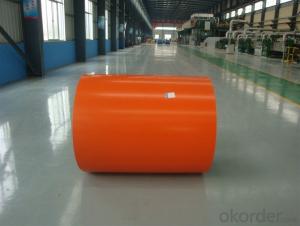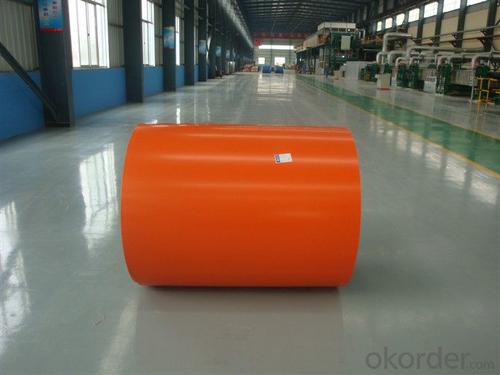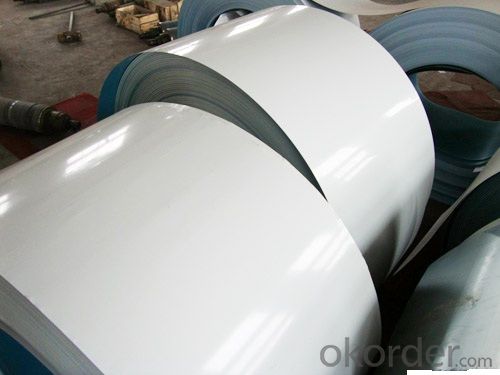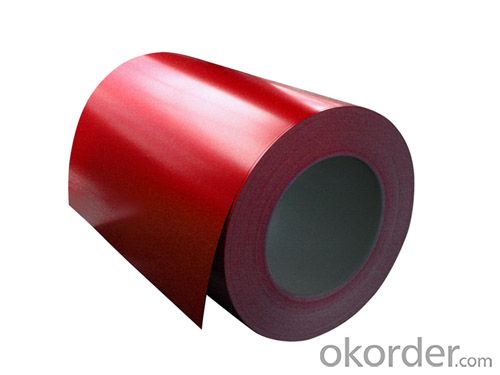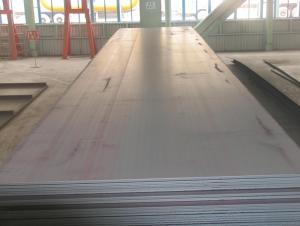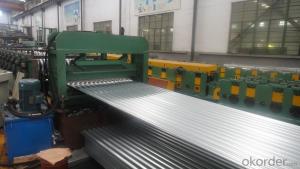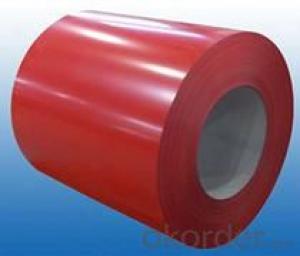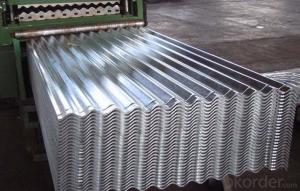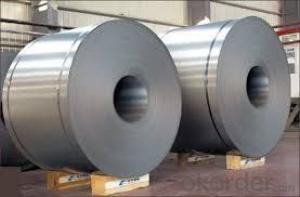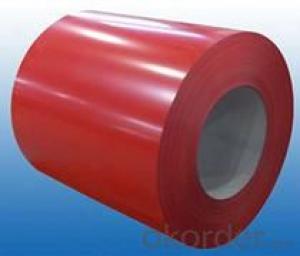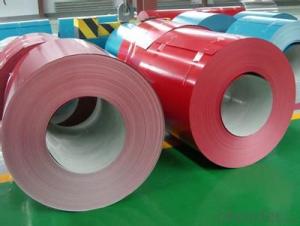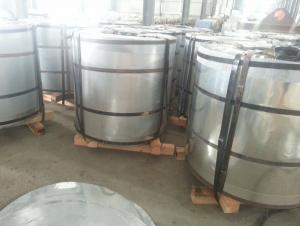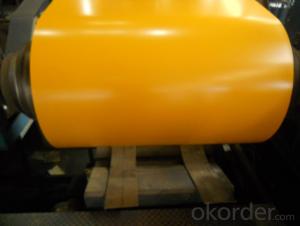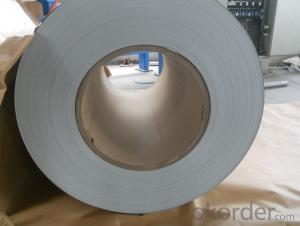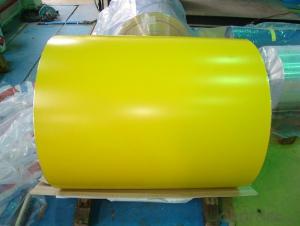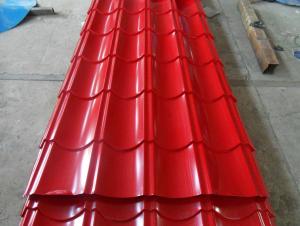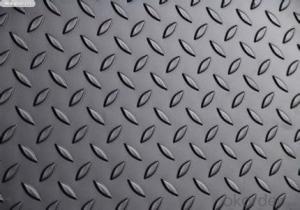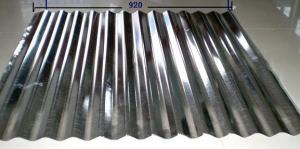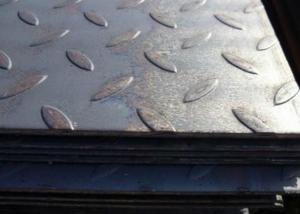LZPRE-PAINTED GALVANIZED STEEL COIL
OKorder Service Pledge
OKorder Financial Service
You Might Also Like
PRE-PAINTED GALVANIZED STEEL COIL 7210490000 PRE-PAINTED GALVANIZED STEEL SHEET
THICKNESS:0.18mm-1.5mm
WIDTH:900mm-1250mm
COATING MASS:Z30-Z275
PAINT:PE、HP、HDP、PVDF、SMP、MATT、PVDF
COLOR:RAL Scale
COIL INNER DIAMETER:508mm/610mm
COIL WEIGHT:3mt-7mt
BASE MATERIAL:Hot-dip GALVANIZED Steel
In continuous units in cold rolled steel strip, galvanized steel (electro galvanized and hot dip galvanized) as substrate, after surface pretreatment (degreasing and science processing), using the method of roll coating, coated with a layer or multi-layer liquid coating of plate, after baking and cooling income is the coating steel plate. Because the coating can have a variety of colors, on the habits of the coated steel sheet is called color coating steel plate. Because the coating is carried out before the sheet metal forming, in foreign countries which is called pre coating plate.
Color coated steel sheet is an organic coating coating on the steel surface, it has the advantages of beautiful appearance, bright color, high strength, good corrosion resistance, easy processing molding, but also allows the user to reduce costs, reduce pollution.
From the United States in 1935 to establish the first continuously coated steel line to begin, color coated steel plate has been widely applied, the current color coated plate varieties, about more than 600 kinds, the advantages of color coated sheet and organic polymer and steel plate of the two, which has good colorability, organic polymer molding, corrosion resistance and decorative, and steel plate with high strength and easy processing, can easily be punching cutting, bending, deep drawing processing. Made this makes organic coated steel sheet products have excellent practical, decorative, workability, durability.
- Q: What is the difference between a steel sheet and a steel plate?
- The differences between a steel sheet and a steel plate are significant. Firstly, the thickness of a steel sheet is typically less than 6mm, whereas a steel plate is generally thicker, measuring 6mm or more. This discrepancy in thickness is primarily attributed to the intended purpose of each product. Steel sheets are commonly used in scenarios where weight and flexibility are crucial, such as in the production of automobile bodies or appliances. Conversely, steel plates are frequently employed in heavy-duty constructions such as bridges, buildings, or machinery, where strength and durability are of utmost importance. Another distinction can be found in the manufacturing process. Steel sheets are usually created through hot rolling, which involves heating the steel above its recrystallization temperature and subsequently passing it between rollers to achieve the desired thickness. On the other hand, steel plates can be made through either hot rolling or cold rolling processes. Cold rolling entails passing the steel through rollers at room temperature, resulting in a more precise and smoother surface finish. Furthermore, the size of steel sheets and plates also differs. Steel sheets are often standardized in terms of width and length, making them more manageable and easier to transport. In contrast, steel plates are available in various sizes and dimensions, providing greater customization options to suit specific project requirements. To summarize, the key distinctions between a steel sheet and a steel plate lie in their thickness, manufacturing process, and intended use. Steel sheets are thinner and lighter, while steel plates are thicker and utilized in heavy-duty applications that demand strength and durability.
- Q: What is the difference between a smooth and textured steel sheet?
- A smooth steel sheet has a flat and even surface, while a textured steel sheet has a pattern or texture imprinted on its surface, providing a visual or tactile effect.
- Q: Are steel sheets vulnerable to UV radiation?
- UV radiation generally does not pose a threat to steel sheets. This is because steel is a highly durable and resilient material that can withstand various environmental factors, including UV radiation. Unlike other materials, steel does not weaken or degrade when exposed to prolonged sunlight or UV rays. In fact, many steel structures, such as buildings, bridges, and outdoor equipment, are specifically designed to endure outdoor conditions and can remain undamaged by UV radiation for many decades. However, it is worth noting that certain types of steel, such as galvanized steel, may offer even greater resistance to UV radiation due to additional protective coatings applied during the manufacturing process. All in all, steel sheets are a dependable option for applications that require protection against UV radiation.
- Q: Can the steel sheets be painted or coated?
- Indeed, it is possible to paint or coat steel sheets. Diverse industries often engage in the practice of painting or coating steel sheets to enhance visual appeal, guard against corrosion, and bolster durability. Prior to any application of paint or coating, it is crucial to thoroughly cleanse and prepare the steel surface to ensure proper adhesion. The choice of paint or coating depends on the desired finish, environmental conditions, and specific application. It is imperative to select a paint or coating that is compatible with the steel substrate and capable of enduring the intended use and exposure to chemicals, moisture, UV radiation, or other factors that may impact the performance and lifespan of the coating.
- Q: Can the steel sheets be used for outdoor furniture?
- Yes, steel sheets can be used for outdoor furniture as they are durable, weather-resistant, and can withstand harsh outdoor conditions.
- Q: What are the driving methods for steel sheet piles?
- The construction of steel sheet pile mainly consists of mechanical hand, crawler crane, vibratory hammer and static pile driving machine.
- Q: What is the process of anodizing steel sheets?
- The process of anodizing steel sheets involves several steps to create a protective surface layer on the steel. First, the steel sheets are cleaned thoroughly to remove any dirt, grease, or other contaminants. This is typically done using a degreasing agent or by immersing the sheets in a solvent bath. Once the sheets are clean, they are then rinsed with water to ensure all traces of the cleaning agents are removed. This step is important to prevent any interference with the anodizing process. Next, the steel sheets are placed in an electrolyte bath, which is a solution containing an acid, such as sulfuric acid. The sheets are connected to the positive terminal of a power source, while a cathode is connected to the negative terminal. This creates an electrical circuit. When the power source is turned on, an electrical current passes through the circuit, causing oxygen ions to be released at the anode (the steel sheets). These oxygen ions react with the iron in the steel, forming a layer of iron oxide on the surface. During the anodizing process, the thickness of the oxide layer can be controlled by adjusting the duration of the process or the voltage applied. Thicker layers provide enhanced corrosion resistance and can also be dyed to achieve different colors if desired. After the anodizing process is complete, the steel sheets are rinsed again to remove any remaining electrolyte solution. They are then dried to prevent water spots or streaks from forming on the surface. Overall, anodizing steel sheets is a method of creating a durable and corrosion-resistant surface layer by utilizing an electrochemical process. This process helps to improve the lifespan and appearance of the steel, making it suitable for various applications such as architectural, automotive, or industrial purposes.
- Q: What is the standard thickness of steel sheets?
- The standard thickness of steel sheets varies depending on the specific application and industry. However, commonly used steel sheets range in thickness from 0.5mm to 6mm.
- Q: Are steel sheets vulnerable to UV radiation?
- Yes, steel sheets are generally not vulnerable to UV radiation.
- Q: What is reinforced steel plate?
- The cold rolling is based on the hot rolling, and then the steel plate is formed by cold rolling after pickling.
Send your message to us
LZPRE-PAINTED GALVANIZED STEEL COIL
OKorder Service Pledge
OKorder Financial Service
Similar products
Hot products
Hot Searches
Related keywords
